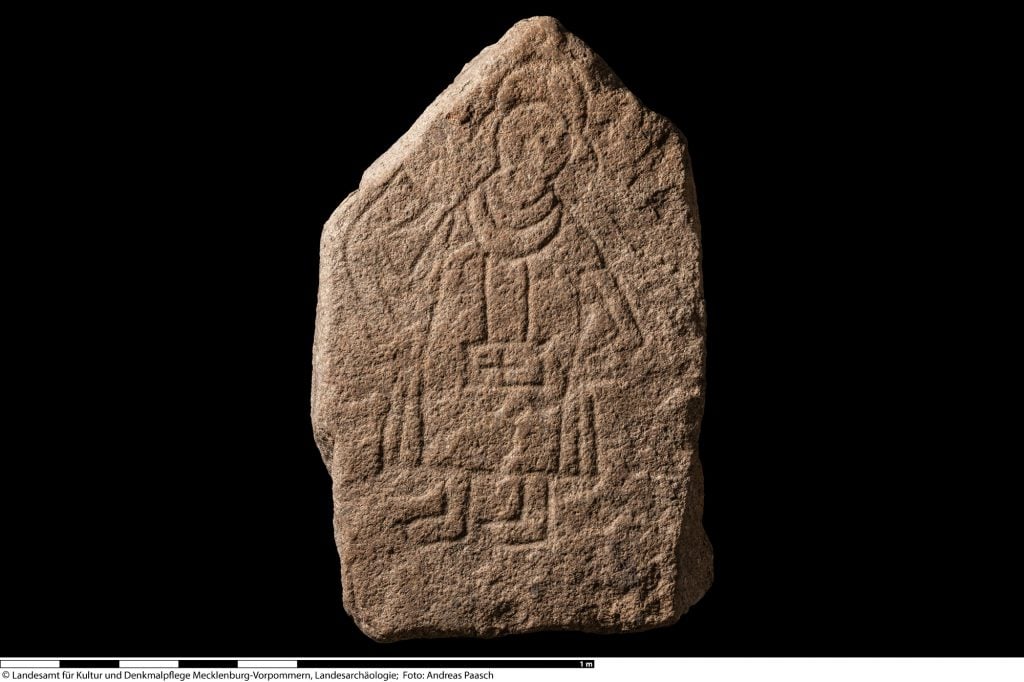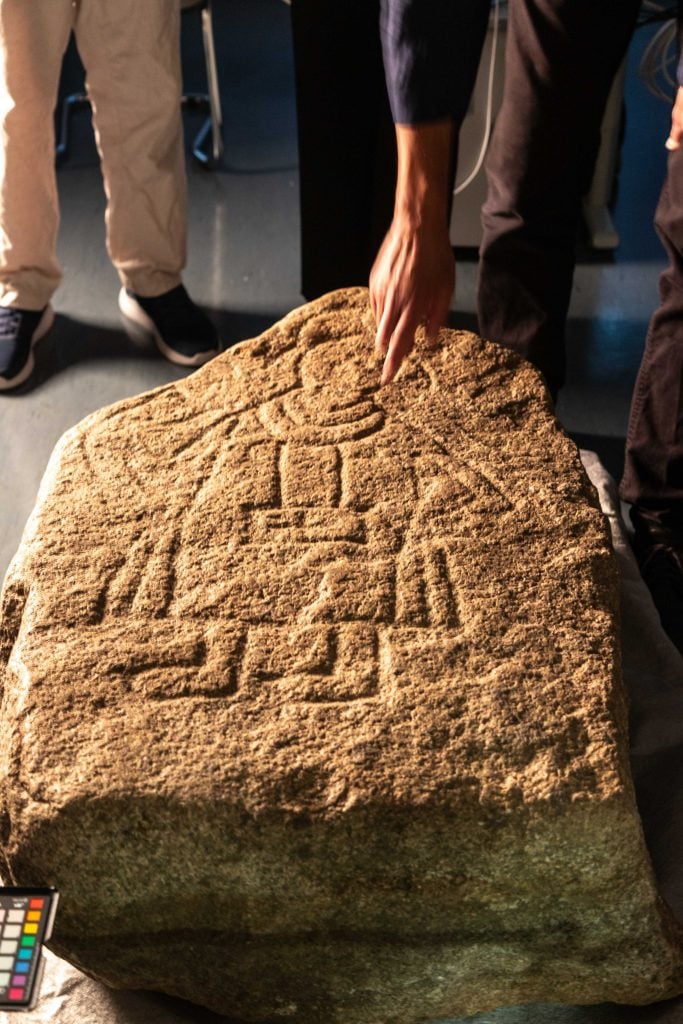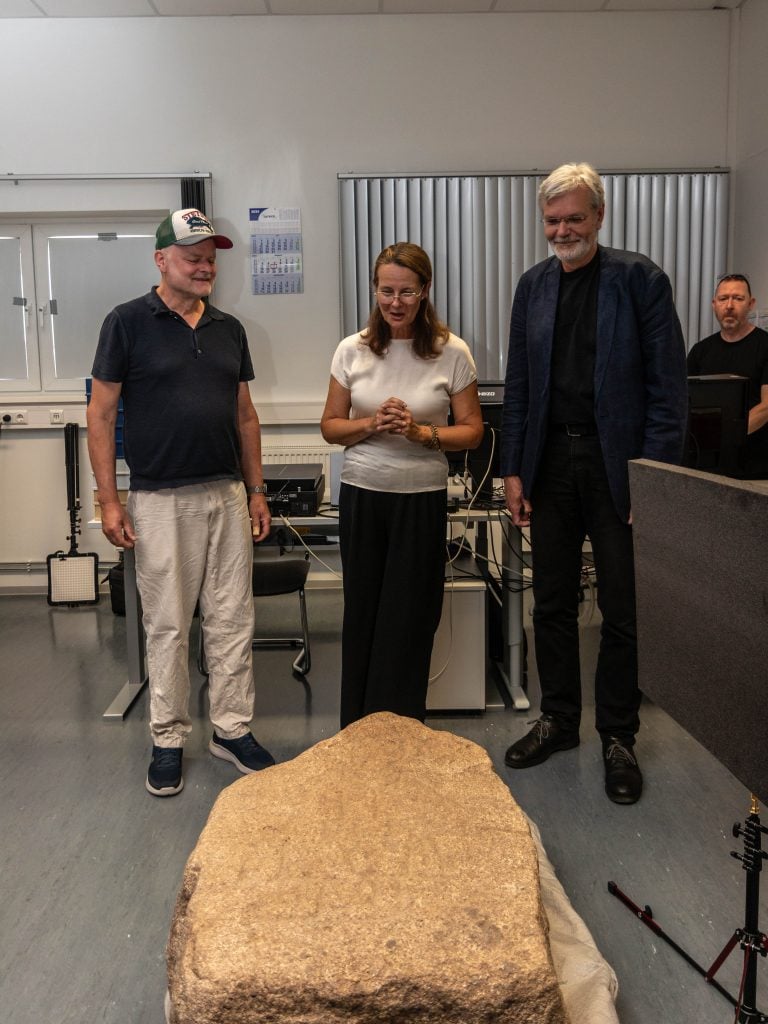Archaeology & History
‘Spectacular’ 12th-Century Picture Stone Turns Up During a Home Renovation
Researchers say the image on the stone is unique.

In August, Peter Wittenberg was conducting construction work on his house in Klotzow, a village in northern Germany on the border with Poland, when he unearthed a strange three-foot-long granite boulder etched with the figure of a man.
Wittenberg contacted the state archaeological office of Mecklenburg-Vorpommern, which confirmed that his discovery was indeed of considerable historical interest. Known in German as a Bildstein (literally picture stone), it’s one of 20 or so others that have been found along the Baltic coast. This one is unique, however: it is the only one to show a figure with a cross in front of its body.
The weathered stone depicts an upright man who wears a cap, a shawl, a short robe, and shoes. In his right hand he holds something resembling a banner, and his left appears to hold a cross that hangs from his shawl.

The picture stone is nearly 900 years old. Photo: courtesy WKM MV.
Back at the state archaeological laboratory in the city of Schwerin, researchers determined that the picture stone dated to the 12th century. They called it one of the region’s most spectacular archaeological finds in years.
Its significance partly rests with the possibility that the man depicted is Otto of Bamberg, a German missionary who served under Emperor Henry IV and spent much of his life leading the inhabitants of medieval Pomerania away from paganism and towards Christianity. In 1189, some six decades on from his death, Otto was canonized by Pope Clement III. (It so happens that the Wolgast Museum is currently hosting the exhibition “World in Transition—Otto von Bamberg and the Christianization of Pomerania 900 Years Ago.”)
“[in the 12th century] The Christian Polish Duke Boleslaw has conquered the area and he demanded the Pomeranian nobility and all inhabitants get baptized,” said Detlef Jantzen, the state archaeologist. “To achieve this, Boleslaw asked bishop Otto of Bamberg to missionize Pomerania. He destroyed the local pagan temples, founded churches and founded Christian communities.”

Peter Wittenberg, who found the picture stone, stands with the Culture Minister, Bettina Martin, and state archaeologist Detlef Jantzen. Photo: courtesy courtesy WKM MV.
The reason archaeologists believe the figure may be Otto is the similarity of the shawl and cross to a pallium, a circular band worn around the neck that the Holy See bestowed upon select archbishops. It is known that in 1111, Otto received a pallium from pope Paschal II. Researchers believe Otto probably traveled near or through the village of Klotzow during his journeys across Pomerania in the mid-1120s, and he would have been the only possible holder of a pallium at that time. Though Jantzen says the banner could also be a drinking horn and that the type of cross is not typical to the ones used on palliums.
Clarity may come through further research. “We are looking for any traces that might deliver information about the former use of the stone – i.e. traces of colour,” Jantzen said. “We would like to learn more about the original context of the stone, whether it might have been placed close to a church or a monastery, whose buildings must have vanished long time ago, but we can probably be found by using geophysical methods.”
After the state archaeological department has concluded its research, it hopes to place the picture stone on permanent display in Klotzow.





